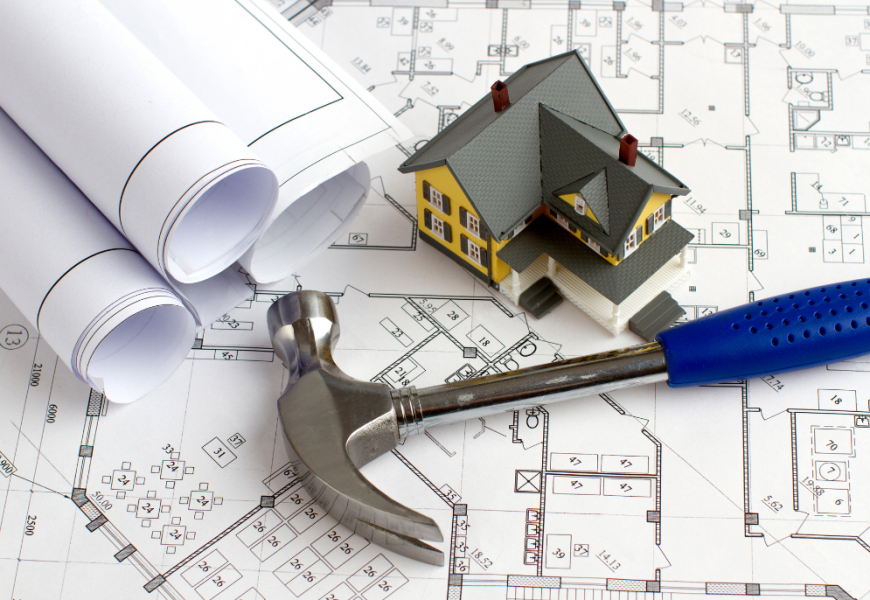Building a new home is one of the most exciting and rewarding experiences you can undertake. It gives you the opportunity to design a space that reflects your personal style, meets your needs, and becomes the foundation for memories that will last a lifetime. While the process can be complex, it is also incredibly fulfilling. Whether you’re a first-time homebuilder or someone looking to build again, understanding the key stages in the construction of a new home can make the process easier and more enjoyable.
In this guide, we’ll walk you through every stage of building a new home—from selecting the right land to moving in. Along the way, we’ll highlight how Howard Hanna Real Estate Services can support you and make the process smoother and more efficient.
- Choosing the Right Plot of Land: The Foundation of Your Dream Home
The first step in building your new home is choosing the ideal piece of land. Your plot of land plays a crucial role in shaping your home’s design and its long-term value. Consider the following when selecting your land:
- Location: The location of your land has a significant impact on your lifestyle. Consider factors like proximity to work, schools, shopping, public transport and recreational areas. The right location will not only influence your day-to-day living but also the future resale value of your home.
- Land Characteristics: Assessing the physical properties of the land is crucial. Consider the soil type, terrain and whether the land is prone to issues like flooding or drainage problems. A flatter plot is easier and more affordable to build on, while a sloped or uneven lot may require more preparation and additional costs.
- Zoning and Permits: Zoning laws dictate what can be built on the land, and they vary by location. It’s essential to confirm that the land is zoned for residential use and that you can obtain the necessary building permits. Howard Hanna’s experienced agents can help you navigate local zoning laws and ensure you’re on the right path to securing the appropriate permits.
Once you’ve selected the perfect plot, you can begin preparing it for construction.
- Designing Your Dream Home: Turning Your Vision into Reality
Designing your home is one of the most exciting parts of the process. Whether you choose a custom design or a pre-designed plan, this is when your vision begins to take shape.
- Custom Design: If you’re building a custom home, an architect will work with you to create blueprints that reflect your unique style and functional needs. This stage includes discussing room layouts, materials and aesthetic details. The architect will also ensure that your design complies with local building codes and regulations.
- Pre-designed Plans: Many builders offer predesigned floor plans that can be customized to some degree. This option tends to be more budget-friendly and efficient, but it still allows for personalization in terms of finishes, layout adjustments and optional features.
- Budgeting and Material Selection: The design stage is also when you’ll start considering materials for everything from flooring and countertops to windows and cabinetry. The materials you choose can have a significant impact on both your budget and your home’s aesthetic appeal. Balancing your dream features with a realistic budget is essential, and Howard Hanna agents can help connect you with professionals who can assist in designing your dream home while keeping your financial goals in mind.
- Preparing the Land: Establishing the Foundation
Once your plans are in place, it’s time to prepare the land for construction. The foundation is critical as it supports the entire structure of your home.
- Excavation and Site Preparation: This phase involves clearing the land of any trees, rocks, or debris that may interfere with construction. The site will also need to be leveled, and trenches will be dug for plumbing and electrical lines. The land may also need to be tested to ensure the soil is suitable for the type of foundation you plan to use.
- Types of Foundations: The foundation of your home can vary based on your location, budget, and design. Common foundation types include:
- Slab Foundation: A concrete slab poured directly onto the ground. It’s a good option for mild climates and level land.
- Crawl Space Foundation: This type elevates the house slightly above the ground, providing a small space for utilities.
- Full Basement: A full basement involves digging deeper to create an additional level beneath the home. It’s ideal for colder climates and provides extra storage or living space.
- Pouring the Foundation: Once the foundation type is determined, concrete is poured into forms to create the foundation. This step is essential for ensuring the home’s stability and longevity.
- Framing the Structure: Building the Skeleton of Your Home
With the foundation in place, the next step is framing, where the skeleton of your home begins to take shape.
- Building the Frame: The frame is constructed from materials like wood, steel or concrete. This framework includes the walls, floors and roof structure, providing the basic shape of the home. During this stage, you’ll start to see your floor plan take shape.
- Roof Trusses and Decking: Roof trusses (the framework that supports the roof) are installed, followed by decking material that forms the base of your roof. This layer is covered with weatherproofing to prevent leaks.
- Sheathing: Sheathing is applied to the exterior walls and roof, which adds structural integrity and provides a base for the siding and roofing materials.
- Installing Essential Systems: Plumbing, Electrical, and HVAC
With the home’s framework in place, it’s time to install the essential systems that make your home functional.
- Plumbing and Electrical Wiring: Plumbers will install the water pipes and drainage systems, while electricians will run wires throughout the home to power lights, outlets and appliances. The electrical panel is also installed at this stage to control the flow of electricity throughout the house.
- HVAC Installation: The heating, ventilation and air conditioning (HVAC) systems are installed to ensure your home remains comfortable year-round. Ductwork is routed through the house, and the HVAC units are placed in designated areas.
- Inspections: After the plumbing, electrical and HVAC systems are installed, inspections are conducted to ensure they meet safety codes and regulations.
- Sealing the Home: Roofing, Windows, and Exterior Finishes
With the home’s essential systems in place, it’s time to close up the structure and make it weatherproof.
- Roofing: The roof is completed with materials like shingles or metal panels, ensuring that your home is protected from rain, snow and other elements. A well-installed roof helps improve the home’s energy efficiency and prevents damage from leaks.
- Windows and Doors: Windows and exterior doors are installed, providing natural light and access to the outside. Proper insulation around windows and doors is essential for energy efficiency.
- Siding and Exterior Finishes: The exterior of your home is covered with siding materials such as vinyl, wood or brick. This not only adds curb appeal but also protects the house from weather damage.
- Interior Work: Walls, Flooring, and Fixtures
With the exterior of the home sealed, the focus shifts to the interior.
- Drywall: Drywall is installed on the walls and ceilings, creating the structure of your home’s interior spaces. Once it’s hung, the drywall is taped, mudded and sanded smooth.
- Flooring: The flooring is installed, whether it’s hardwood, tile, carpet, or another material. Flooring has a significant impact on your home’s aesthetic, so take care in selecting the right materials for each room.
- Cabinetry and Fixtures: Cabinets, countertops, light fixtures and appliances are installed, completing the functional and aesthetic elements of the home. This is when your kitchen and bathrooms really start to take shape.
- Final Touches: Painting, Landscaping, and Inspections
Once the major construction is done, it’s time to focus on the finishing touches.
- Painting: The interior is painted, including walls, trim and doors. You’ll also make decisions on accent colors and finishes that align with your style.
- Landscaping: Landscaping is added around the home, which can include planting trees, shrubs, grass and flowers. This step enhances the home’s curb appeal and creates a welcoming environment.
- Final Inspections: Before you can move in, your home will undergo a final inspection to ensure everything meets local building codes. Once approved, you’ll receive a certificate of occupancy, and your home is officially ready for you to move in.
- Move-In Day: Settling into Your New Home
Finally, the big day arrives! After all the planning and construction, it’s time to move into your brand-new home. Whether you’re hosting a housewarming party or simply relaxing in your new space, this is the moment you’ve been working toward.
Building Your Dream Home with Howard Hanna
Building a new home is a multi-step process, but it can be incredibly rewarding when you have the right team by your side. From finding the perfect plot of land to selecting designs and materials, Howard Hanna Real Estate is here to help guide you through every phase of the home-building journey.
Our experienced agents are here to help you find the ideal land, connect you with trusted builders and ensure that your dream home is built with ease and efficiency. If you’re ready to start the process of building your dream home, contact a Howard Hanna agent today and learn more about our real estate services.










